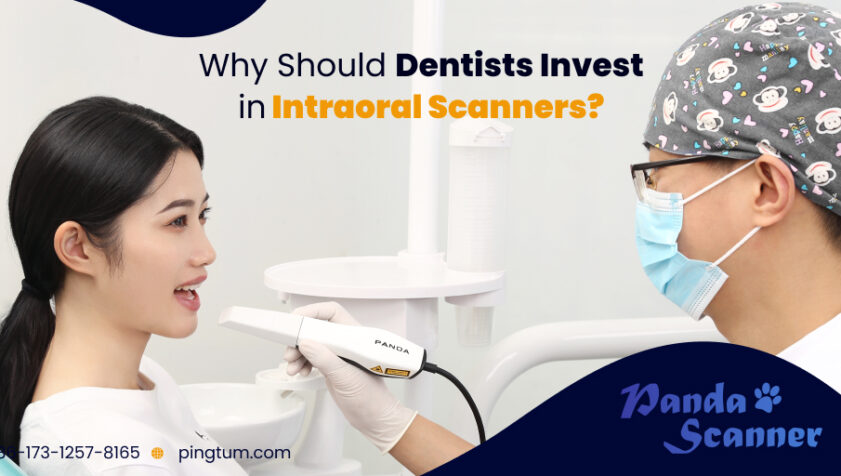In the field of dentistry, an intraoral scanner has shown to be of great use. It offers both patients and dentists a wide range of advantages. The digital imprints of patients’ oral cavities are recorded with these scanners. The speed and accuracy of diagnosis and treatment have significantly improved with the emergence of this technology. Earlier the patients used to feel uneasy because the traditional standard method of scanning the buccal cavity was a matter of multiple steps, and took a lot of time. Plus, due to manual handling, it was prone to mistakes. The popularity of dental scanners thus has increased as a result of their convenience and supportive dentistry. It’s time to switch if you aren’t already using an intraoral scanner by adopting this technology and incorporating it into your workflow. Below are several reasons why dentists are choosing the dental scanner.

Advantages of Using Intraoral Scanners
The introductionof digital dental scanners has made it possible to diagnose and treat dental problems more quickly. But one could wonderwhy is it so popular with patients and dentists, this is what going through the various benefits of intraoral scanners can help you to understand.
#1. Less time consuming
The traditional methods for taking dental impressions take a long time and require several cleanups and sanitizations. Who wouldn’t want a treatment free of all these limitations? In contrast to the conventional method, a 3D dental scanner shortens the time patients need to spend in the clinic and speeds up the procedure.
#2. Higher accuracy
Accuracy is a benefit of dental scanners. This method produces accurate findings that enable efficient diagnosis. Additionally, it eliminates some of the problems such as inaccuracy in measurement, data distortion to mention a few, that are invariably present in conventional dental impressions. These scanners lessen the likelihood of remakes since the results are accurate. In other words, productive utilization of the patient and dentist’s chair time.
#3. Easy process
Utilizing intraoral scanners has made taking dental impressions simple. For instance, the dentist has the option to immediately recapture the impression if he or she is dissatisfied with it, rather than having to go through the entire procedure again.
#4. Helpful for implants
The use of intraoral scanners in implantation instances is quite advantageous. These scanners enhance the dental workflow, cutting chair time for implant restoration procedures by 33%.
#5. Safe
Patients can be treated safely while using intraoral scanners. Dentists may safely use these scanners since they don’t release any radiation that might be hazardous.
#6. Scope for real-time feedback
The patient may watch treatment on a real-time basison the chairside monitor as the dentist scans the tooth. Additionally, patients are spared the inconvenience of having to hold onto something rubbery material in their mouths. They just unwind while watching their impressions play out on the screen.
#7. Better communication
The patients may view the accurate models and imprints of their mouth cavity when a digital impression scanner is employed. It is simpler for dentists to speak with their patients and go through different treatment options now that they can see a 3D image of their mouth cavity.
#8. Various applications
The intraoral scanners are used for a variety of diagnostic and treatments, including surgery, prosthodontics, and the preparation of prostheses. Planning diagnosis and treatment with the help of this computerized tool is extremely beneficial in orthodontics.
Conclusion
In summary, a 3D dental scanner provides more benefits than the conventional scanning technique. The stress and agony that come with receiving therapy have been much decreased. Additionally, it is evident from the description above why dentists should use this digital tool in their regular practice.






